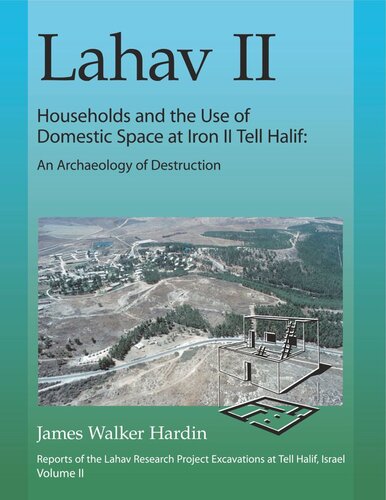

Most ebook files are in PDF format, so you can easily read them using various software such as Foxit Reader or directly on the Google Chrome browser.
Some ebook files are released by publishers in other formats such as .awz, .mobi, .epub, .fb2, etc. You may need to install specific software to read these formats on mobile/PC, such as Calibre.
Please read the tutorial at this link: https://ebookbell.com/faq
We offer FREE conversion to the popular formats you request; however, this may take some time. Therefore, right after payment, please email us, and we will try to provide the service as quickly as possible.
For some exceptional file formats or broken links (if any), please refrain from opening any disputes. Instead, email us first, and we will try to assist within a maximum of 6 hours.
EbookBell Team

4.7
56 reviewsThis volume focuses on the reconstruction of household organization during the Iron II period at Tell Halif. It centers in particular on one four-room, pillared-type building located in Area F7 of Field IV and on its remains, which were sealed in a massive destruction that eclipsed the site in the late eighth century B.C.E. This study was first prepared as a Ph.D. dissertation for the Department of Near Eastern Studies at the University of Arizona (Hardin 2001) and has since been amplified and embellished by further research. Published here are the results of research deliberately designed by the author to provide for more complete recovery and detailed recording in the field of all artifacts and other remains within a special refined three-dimensional grid matrix. These data in turn established a framework for studying the formation processes active on the materials and for conducting a spatial analysis of the assemblages in the building. Along with developing ethnographic and ethnoarchaeological inferences, these techniques are used to identify activities, activity areas, and social organization related to the building, ultimately defining an “archaeological household” consisting of the pillared dwelling and its occupants. Finally, these conclusions are also related to reconstructions of the Iron II-period household suggested by Hebrew Bible sources.